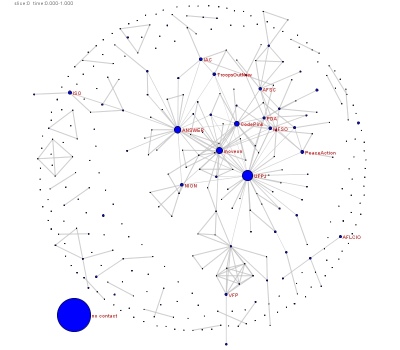I was excited to learn that academic researchers have been out in the streets in the past few years surveying participants in social movements. It would be great if the analysis of these data could help us better understand some of the intuitable but largely invisible relations that structure political mobilization events. Hopefully showing us how to make them stronger, rather than how we can be knocked apart. I’ve been given an opportunity to play with some data from
Michael T. Heaney, Fabio Rojas, “Partisans, Nonpartisans, and the Antiwar Movement in the United States” AMERICAN POLITICS RESEARCH, Vol. 35, No. 5 (September 2007)
The data cover 2529 respondents to surveys of antiwar activists attending large-scale public demonstrations in 2004-2005. Perhaps because they were participant observers rather than plainclothes cops with a disruptive agenda, they had very good response rates. The paper’s focus is mostly on participation (or lack thereof) of antiwar groups in parties. They also include a picture of a network of orgs linked by the individuals who reported being contacted by them with information about a protest.
I’ve been creating some networks with SoNIA after the figure in the paper. No real surprises yet, but it is neat to see groups land in relationships that seem reasonable. Not surprisingly, United for Peace and Justice, ANSWER, and MoveOn.org are right in the core. Even little groups like International Solidarity Movement and the National Lawyers Guild show up. Too bad it doesn’t go back to 2003 so we could see the DASW… My question is this. Are these kinds of graphs just curiosities, or can we actually lean something useful?

